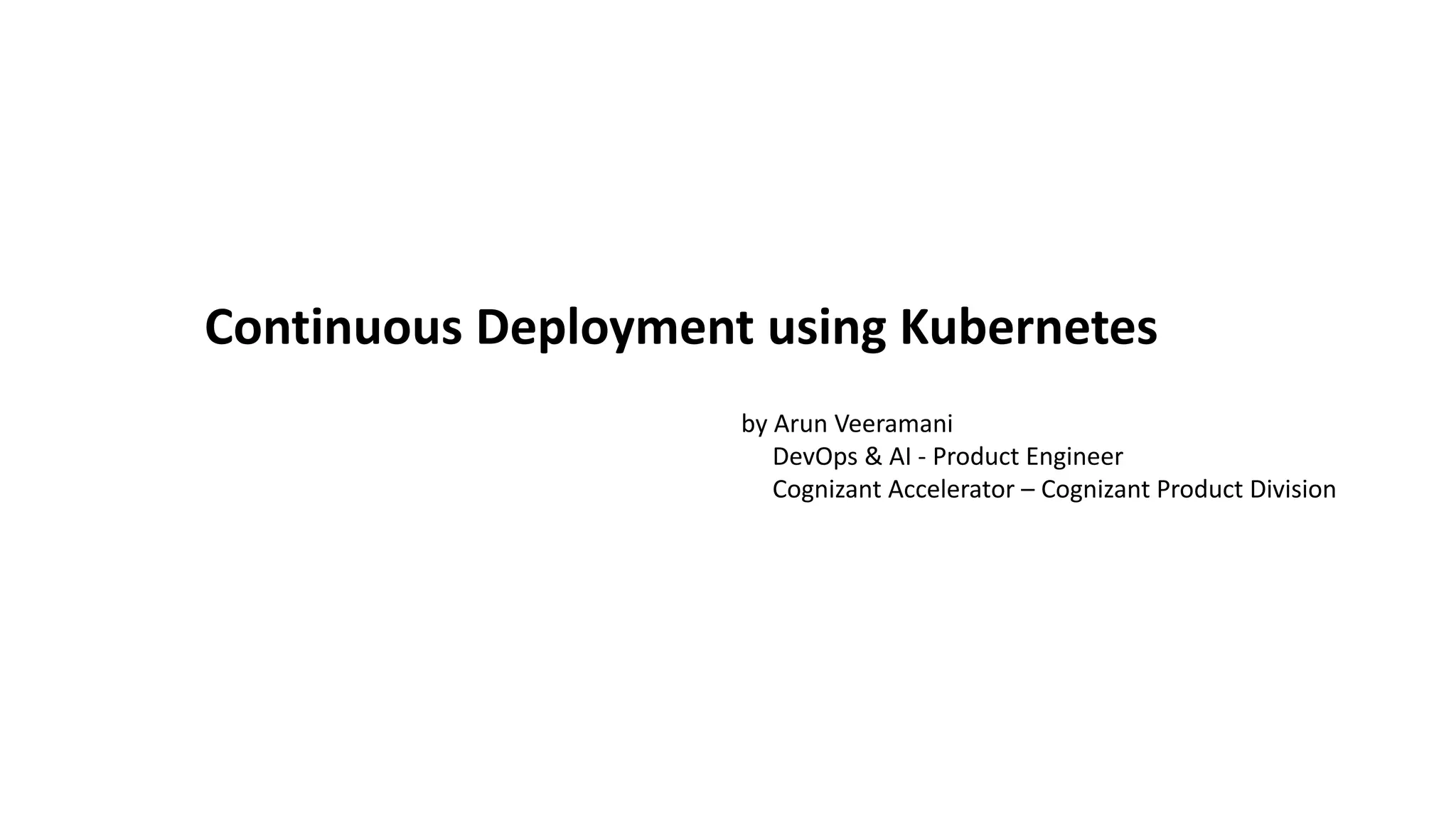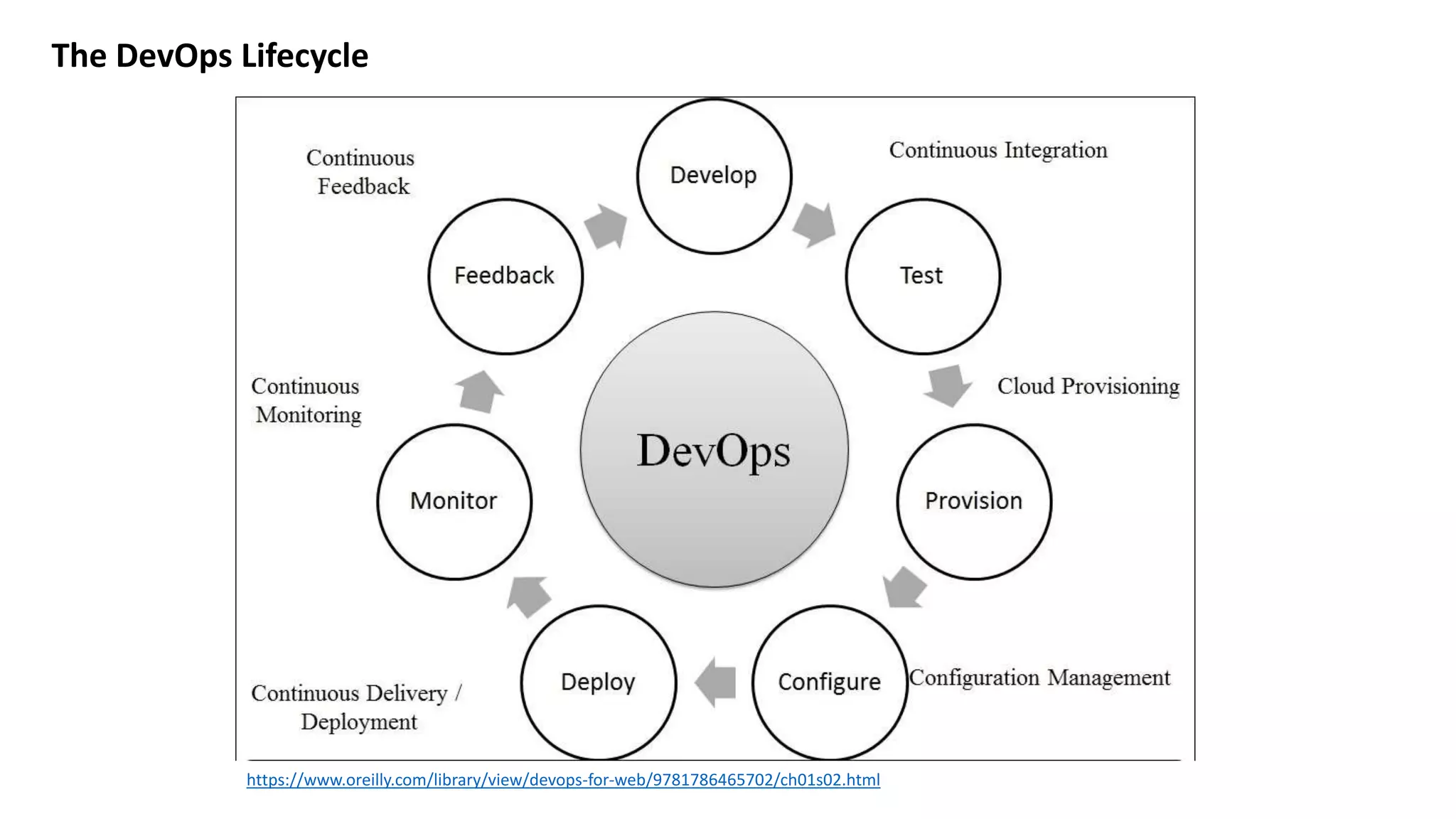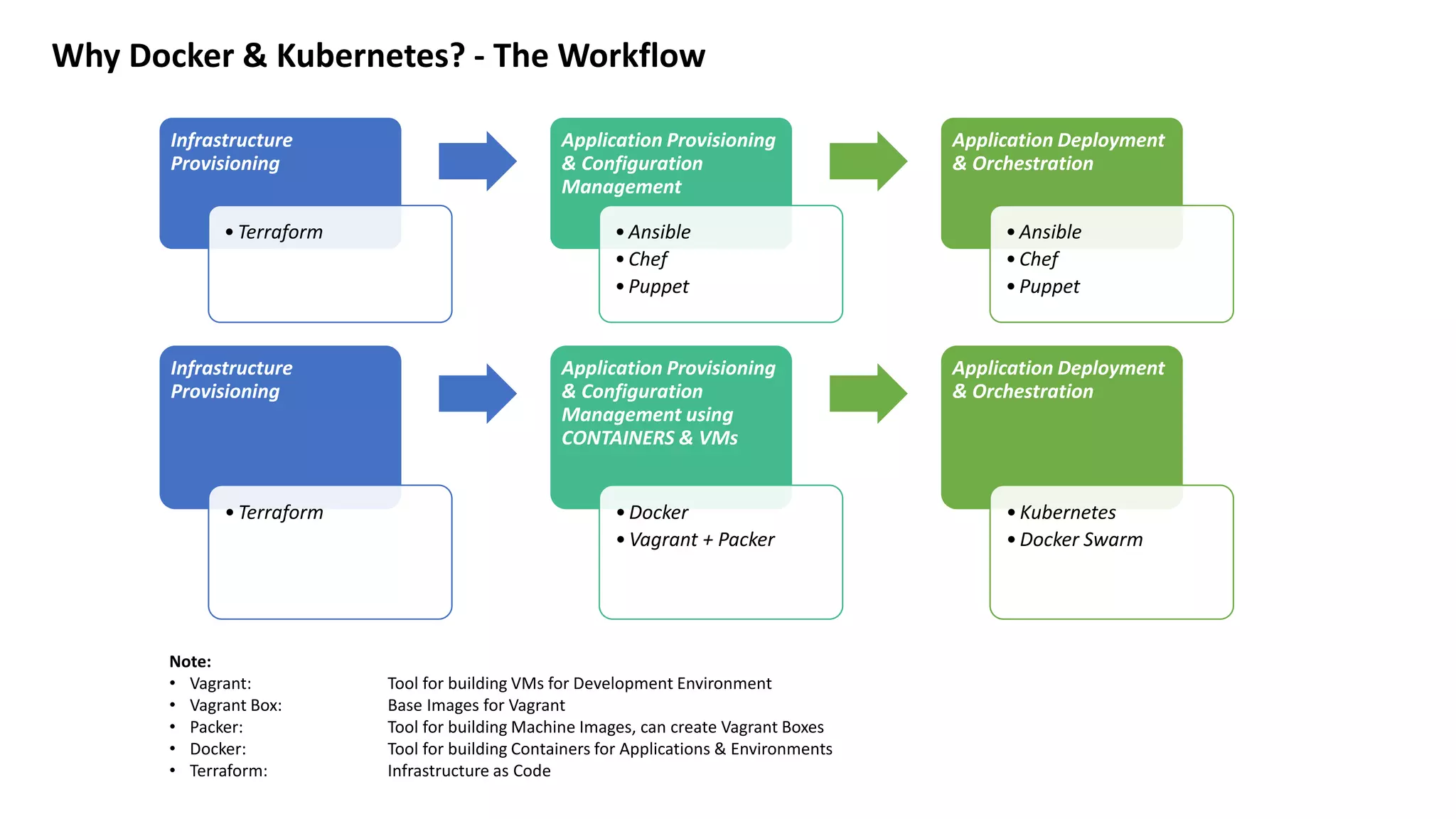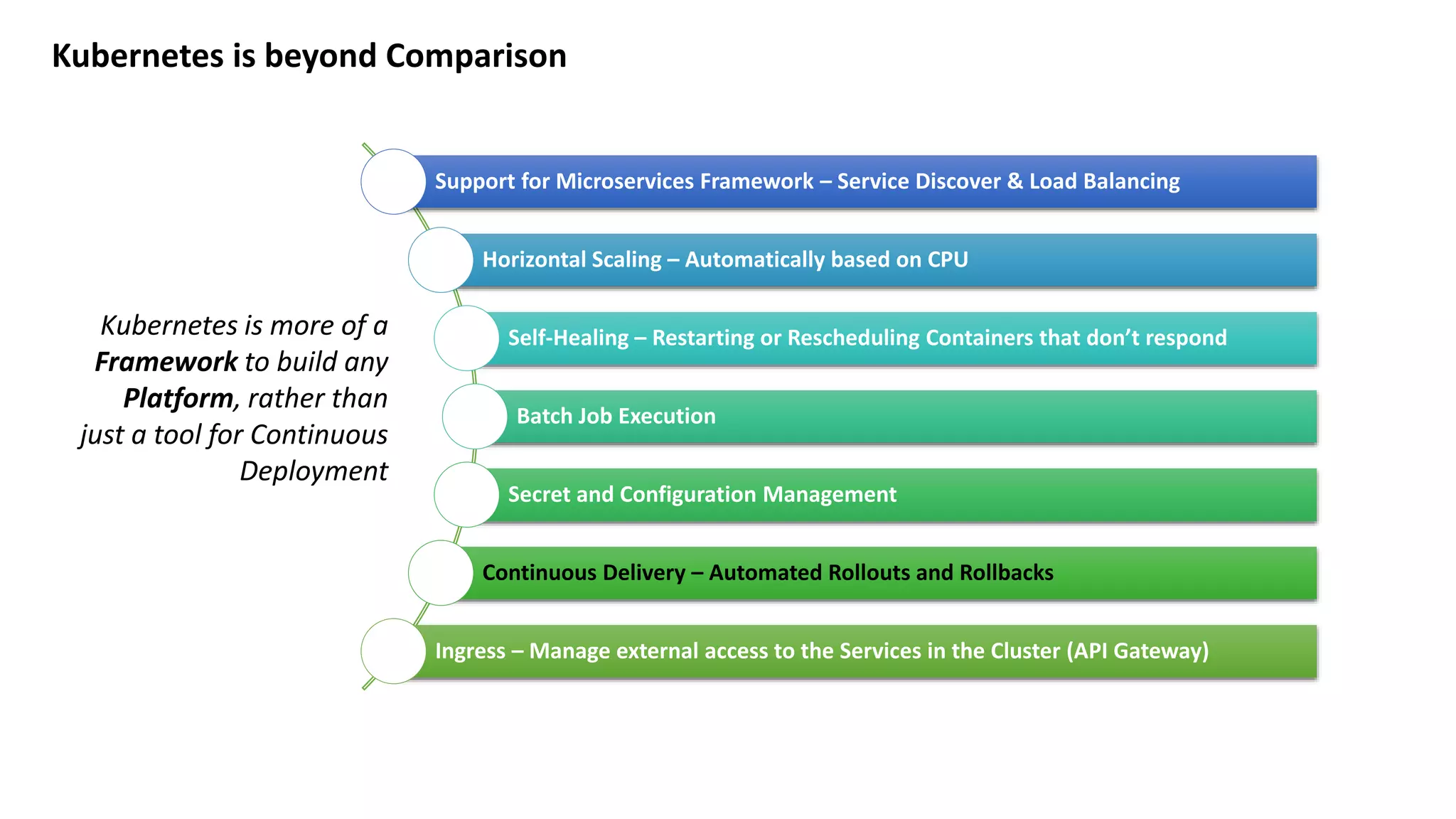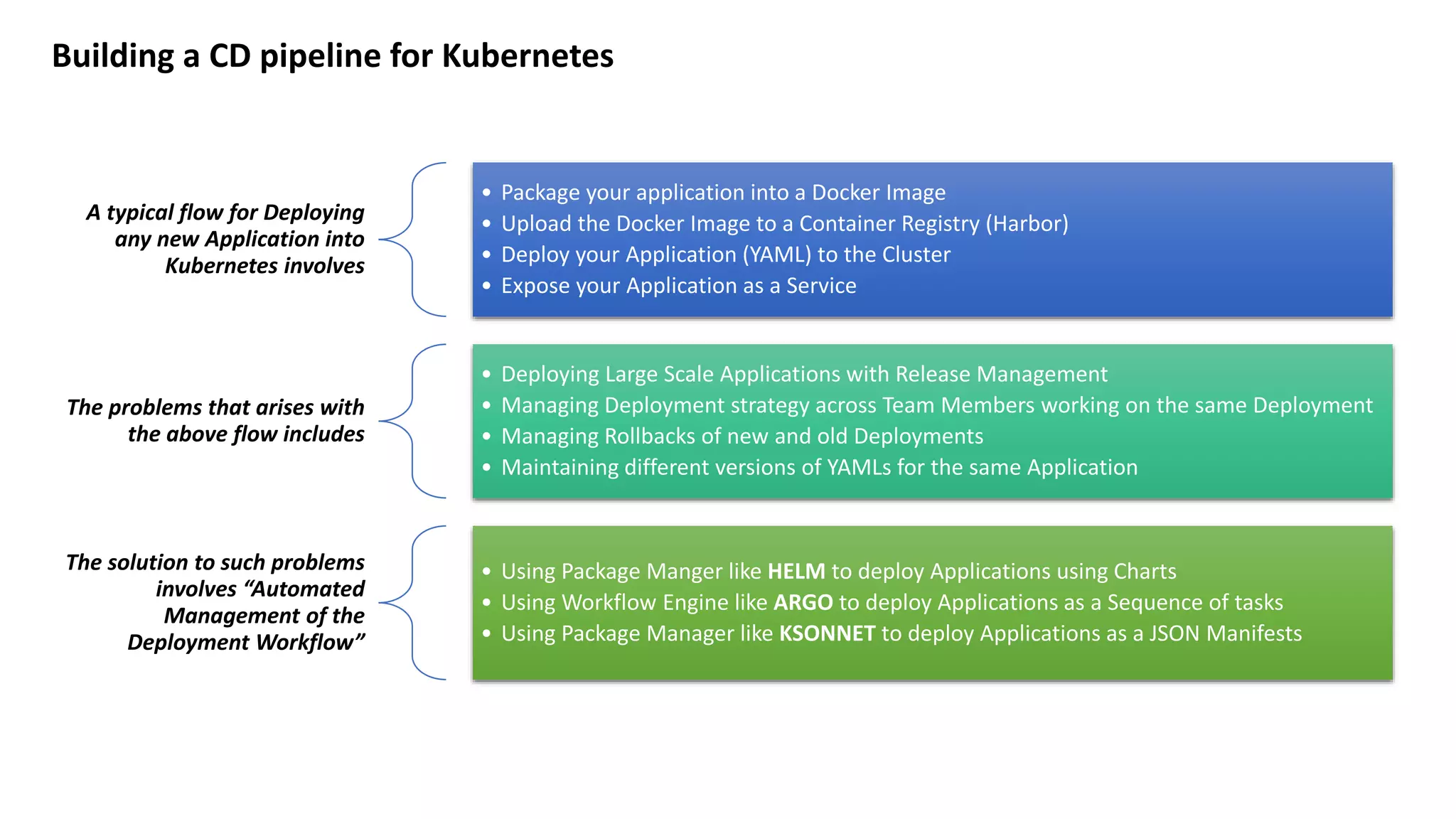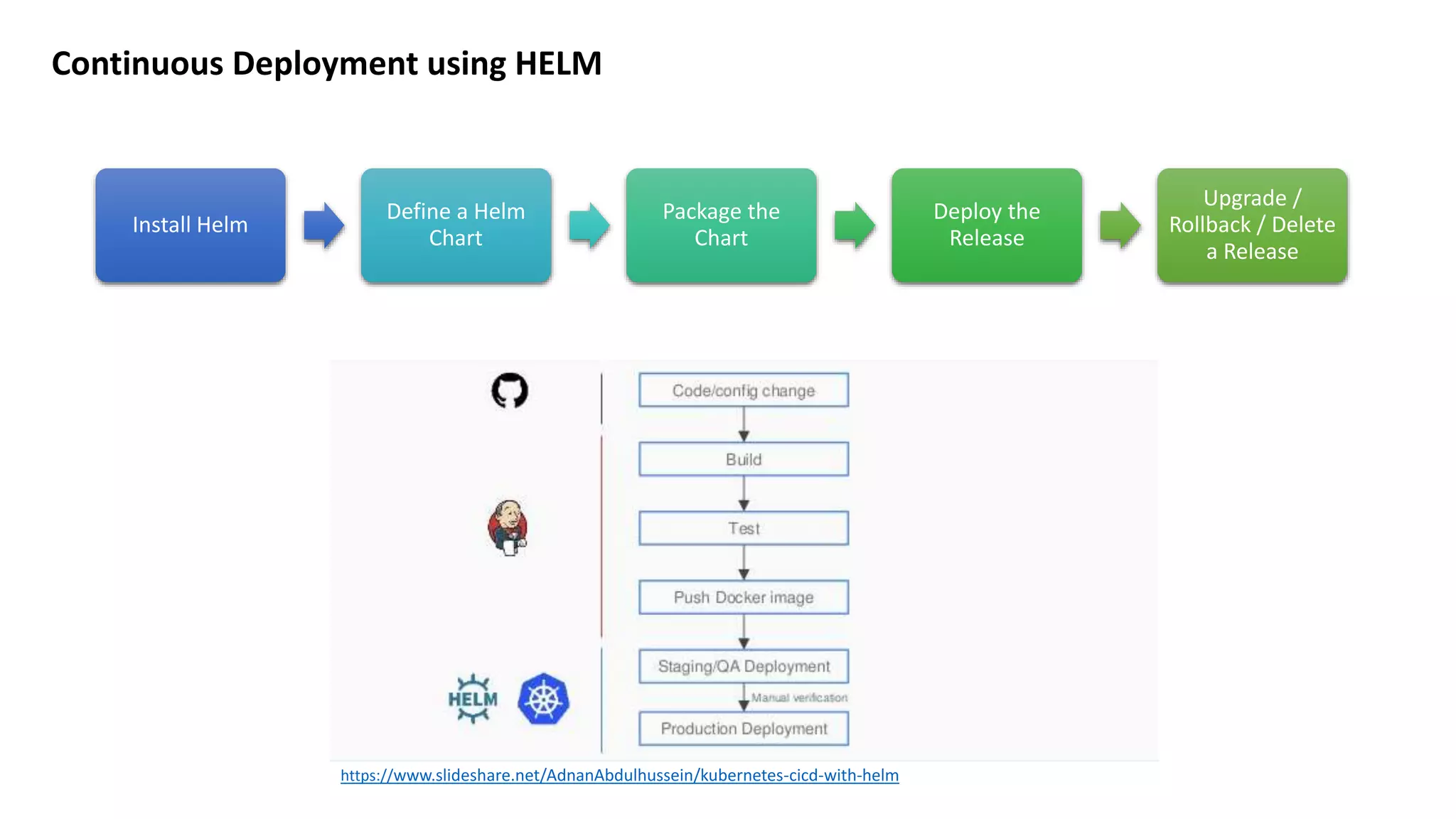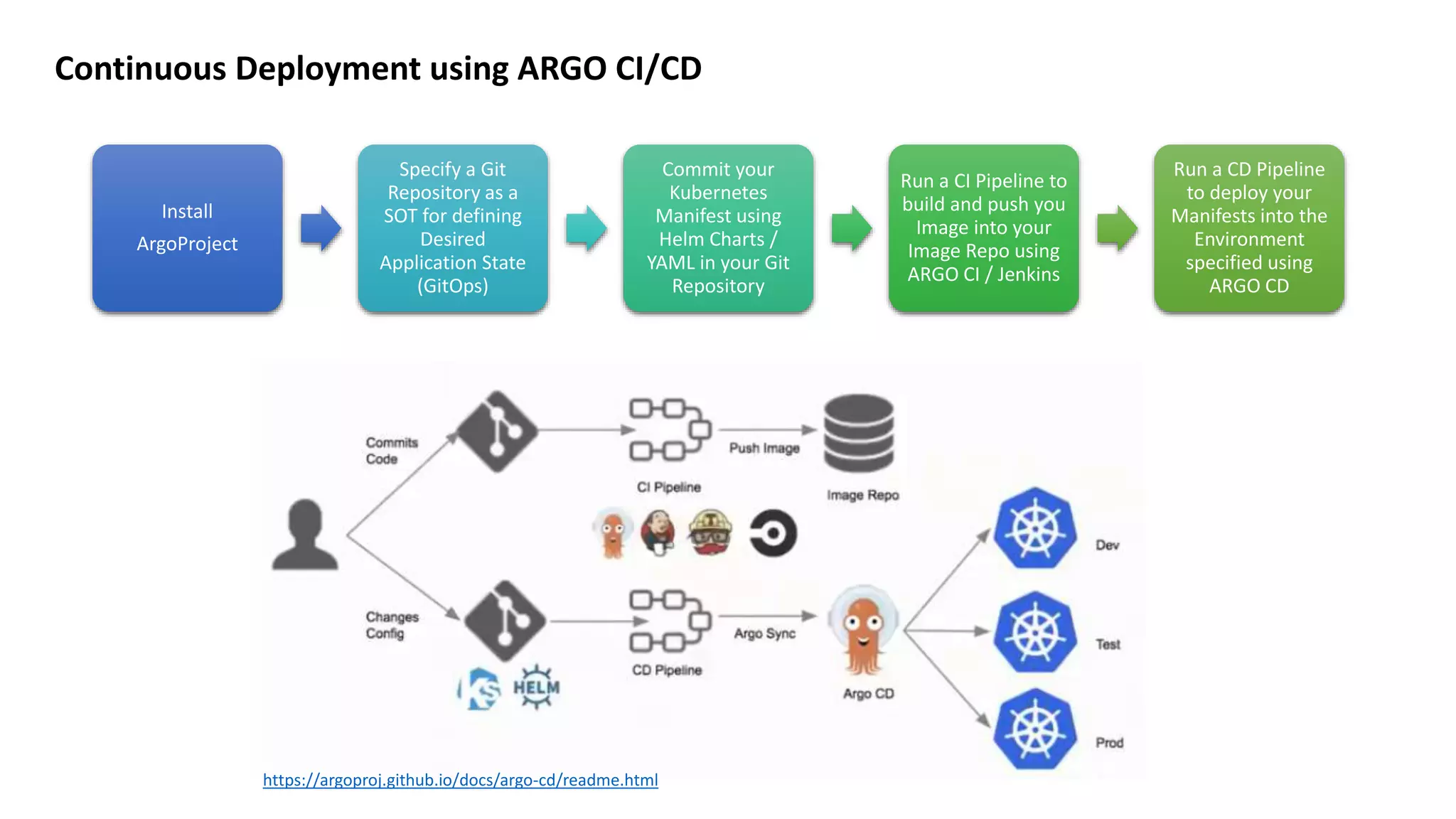This document discusses continuous deployment to Kubernetes. It defines common terms like deployment, containerization, orchestration and configuration management. It then outlines the typical DevOps lifecycle for provisioning infrastructure, configuring applications, and deploying applications. The document explains why Docker and Kubernetes are useful for building containerized applications and deploying them. It also describes how to build a continuous deployment pipeline for Kubernetes using tools like Helm to package and deploy applications as charts, and Argo to automate deployments through a GitOps workflow of committing manifests to a Git repository and having Argo deploy the latest versions.
